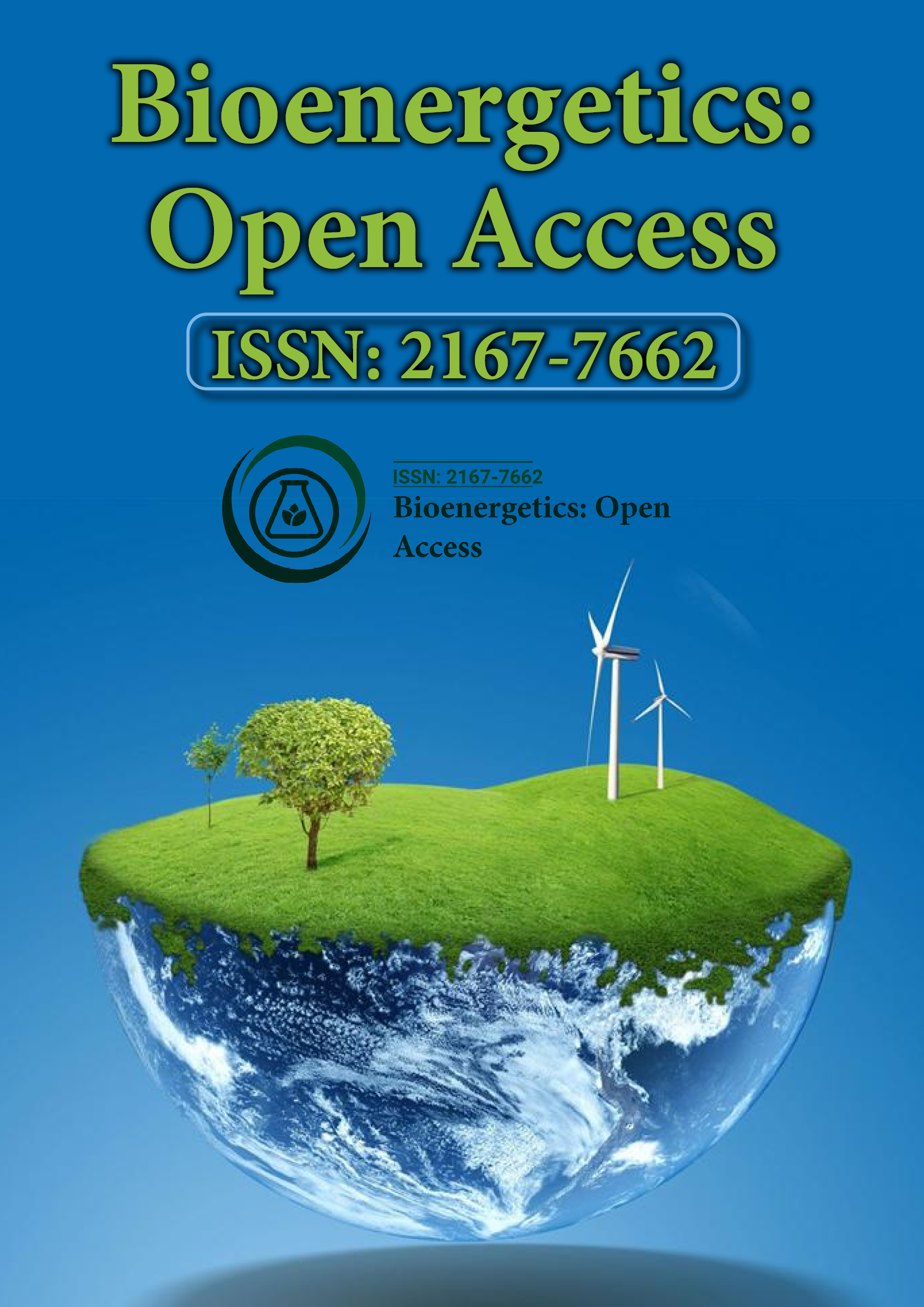Indexed In
- Open J Gate
- Genamics JournalSeek
- Academic Keys
- ResearchBible
- RefSeek
- Directory of Research Journal Indexing (DRJI)
- Hamdard University
- EBSCO A-Z
- OCLC- WorldCat
- Scholarsteer
- Publons
- Euro Pub
- Google Scholar
Useful Links
Share This Page
Journal Flyer

Open Access Journals
- Agri and Aquaculture
- Biochemistry
- Bioinformatics & Systems Biology
- Business & Management
- Chemistry
- Clinical Sciences
- Engineering
- Food & Nutrition
- General Science
- Genetics & Molecular Biology
- Immunology & Microbiology
- Medical Sciences
- Neuroscience & Psychology
- Nursing & Health Care
- Pharmaceutical Sciences
Perspective - (2023) Volume 11, Issue 3
Biothermodynamics: Energy Flow and Changes in Biological Systems
Tobback Robber*Received: 19-Apr-2023, Manuscript No. BEG-23- 21596; Editor assigned: 21-Apr-2023, Pre QC No. BEG-23- 21596 (PQ); Reviewed: 05-May-2023, QC No. BEG-23- 21596; Revised: 12-May-2023, Manuscript No. BEG-23- 21596 (R); Published: 19-May-2023, DOI: 10.35248/2167-7662.23.11.213
Description
Biothermodynamics is a multidisciplinary field that delves into the study of energy flow and transformations within biological systems. It combines principles from thermodynamics, biology, chemistry, and physics to understand the complex mechanisms that govern life processes. From the energy transfer during metabolic reactions to the role of energy in cellular processes, bio thermodynamics offers insights into the fundamental workings of living organisms.
Principles of biothermodynamics
At its core, Bio thermodynamics operates under the same principles as classical thermodynamics, with a focus on the energy flow and the transformation of energy within biological systems. The laws of thermodynamics, such as the conservation of energy and the increase of entropy, serve as the foundation for understanding bioenergetics.
First law of thermodynamics: The principle of energy conservation applies to biological systems, where energy can neither be created nor destroyed but only transferred or transformed. In living organisms, energy is obtained from the environment and utilized for various processes like growth, reproduction, and maintenance.
Second law of thermodynamics: The second law introduces the concept of entropy, a measure of the degree of disorder or randomness in a system. Biological systems tend to resist entropy by maintaining a high level of organization through energy transformations. For instance, cells require energy to maintain their structural integrity and carry out essential functions.
Bioenergetics
Energy flow in biological systems: Bioenergetics focuses on the study of energy flow within living organisms. Cells employ intricate energy conversion processes to sustain life functions and maintain homeostasis. The primary energy currency in cells is Adenosine Triphosphate (ATP, which fuels numerous biochemical reactions.
Cellular respiration: The process of cellular respiration involves the breakdown of organic molecules, such as glucose, to generate ATP. Through a series of enzymatic reactions, energy is released and harnessed to synthesize ATP via oxidative phosphorylation.
Photosynthesis: Plants, algae, and some bacteria carry out photosynthesis, converting light energy into chemical energy in the form of glucose. This process entails capturing solar energy using chlorophyll and other pigments, and subsequent conversion into ATP through the light-dependent and lightindependent reactions.
Thermodynamics of biological processes
Biothermodynamics provides a framework to understand the thermodynamic principles underlying various biological phenomena.
Enzymes and activation energy: Enzymes play a crucial role in catalyzing biochemical reactions by lowering the activation energy required for a reaction to occur. They enable vital processes to proceed at biologically feasible rates, ensuring the efficient utilization of energy.
Metabolism and Energetics: Metabolic pathways involve a series of interconnected reactions that convert substrates into end products. Biothermodynamics helps in quantifying the energy changes that occur during these transformations, shedding light on the overall energy balance of an organism.
Applications and significance of bio thermodynamics
Bio thermodynamics finds wide-ranging applications across different fields, including medicine, bioengineering, and ecology.
Drug design and development: Understanding the energetics of drug-target interactions is crucial for rational drug design. Bio thermodynamics aids in the identification and optimization of drug candidates by predicting their binding affinities and assessing their impact on cellular processes.
Bioengineering and synthetic biology: Bio thermodynamics plays a vital role in designing and optimizing metabolic pathways for the production of biofuels, pharmaceuticals, and other valuable compounds. By understanding the thermodynamics of metabolic reactions, researchers can engineer microorganisms to efficiently produce desired products.
Ecology and ecosystem dynamics: Bio thermodynamics provides insights into the energy flow and efficiency within ecosystems. It helps in understanding the interactions between organisms and their environment, such as energy transfer in food chains and the thermodynamics of ecological processes. This knowledge contributes to our understanding of ecosystem stability, biodiversity, and the effects of environmental changes on biological systems.
Biomedical research: Bio thermodynamics plays a crucial role in studying cellular processes and metabolic dysfunctions associated with diseases. By analyzing the energy changes and thermodynamic parameters of biochemical reactions, researchers can identify metabolic abnormalities and develop therapeutic interventions.
Understanding biological systems: Bio thermodynamics helps unravel the fundamental mechanisms underlying life processes, allowing scientists to decipher the intricate web of energy flow and transformations in biological systems. By quantifying energy changes and characterizing thermodynamic properties, researchers gain a deeper understanding of the principles that govern life, from cellular functions to organismal behavior.
Citation: Robber T (2023) Biothermodynamics: Energy Flow and Changes in Biological Systems. J Bio Energetics. 11:213.
Copyright: © 2023 Robber T. This is an open-access article distributed under the terms of the Creative Commons Attribution License, which permits unrestricted use, distribution, and reproduction in any medium, provided the original author and source are credited.
